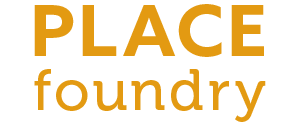Social Chemistry and the pace of transformation
The Cambridge Dictionary defines transformation as “a complete changein the appearance or character of something or someone, especially so that that thing or person is improved.”
In other words, change is necessary to get from here to there. And, you can’t do it alone. Thus, the paradox of transformation is both individual and collective.
Furthermore, the most exciting and pleasurable moments of transformation are usually at the beginning or end. But, unfortunately, the middle part of the transformation is the hardest. And this is where many businesses, public purpose organizations, neighborhoods, or individuals quit.
Community transformation is not for the faint of heart. Yet, it does not mean you can experience pleasure along the way. In my own experience, I have found a few stumbling blocks that can lead you to pause and revert to what was versus what could be.
Usually, underneath the surface is hierarchical thinking and behaviors. Change is a co-creation, not a controlling process.
The best innovation and growth happens when shared values are clear, knowledge sharing and trust are high, and everyone focuses on the future state rather than who is in charge. These three ingredients create the conditions for us to contribute our best thoughts, time, skills, and attributes toward getting us from here to there.
Relational currency is equally as crucial to monetary currency. As I shared last week, social chemistry is critical to repositioning for growth. If you find yourself in a community that is stagnating, declining, or in distress, the pace of transformation is likely being slowed down by relationships. It’s the right moment to pause and ensure operationalizing through relationships is core to your efforts to develop and sustain a thriving place for learning, commerce, housing, and healthy living.
